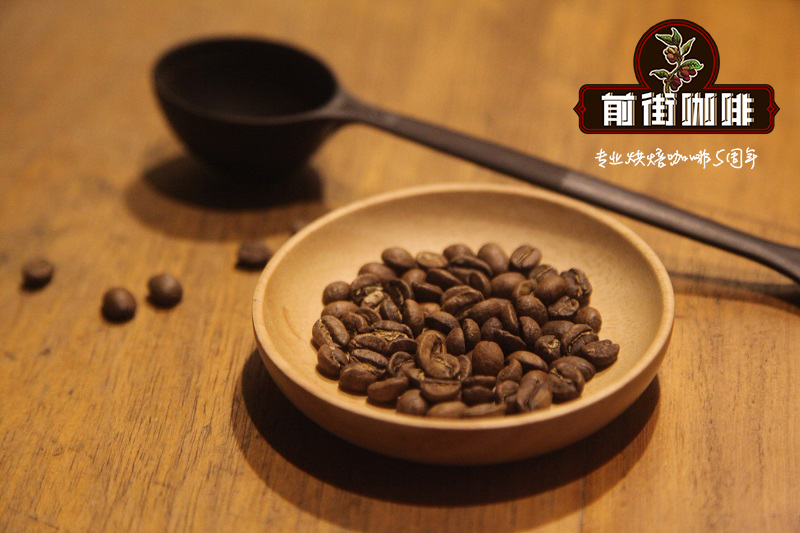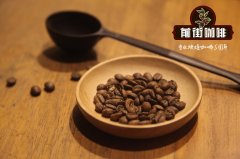Medium and light coffee beans how to flush Yega Xuefei shallow baking how to flush by hand

Professional coffee knowledge exchange more coffee bean information please follow the coffee workshop (Wechat official account cafe_style)
Qianjie-sharing of cooking tutorials in Guji Hambella, Sidamo, Ethiopia
Gujimbela, Sidamo, Ethiopia
Producing area: Sidamo Gujimbela
Processing method: solarization
Haiba: 1900m-2200m
Variety: Arabica
Bean seed: original species
Level: G1
Baking degree: shallow baking (cinnamon baking) / Cinnamon Roast
Hand punching tools used for extraction: V60 filter cup Bonavitta sold thermometers, electronic scales, etc.
Control of the ratio of powder to water in coffee extraction: for most practitioners and coffee lovers in the industry, the ratio of powder to water in this coffee is controlled between 1:15 and 1:16. Adjust the powder-to-water ratio to 1:10 in Qianjie. In practice, one person uses 20 grams of powder to extract 200ml coffee liquid, and two people use 33 grams of powder to extract 330ml coffee liquid. On Yuji Island, the standard quantity is 150ml/ Cup, and the rest can be tasted by other guests.
Qianjie for this coffee extraction water requirements: TDS (total dissolved solid matter) value of about 120, the temperature of water between 92 degrees-93 degrees. Well, this is very important.
Qianjie requirements for the grindability of coffee beans extracted from this coffee: the medium powder is slightly thicker.
Qianjie water injection method for this coffee extraction: fully stewed (about 30-40s), using large water flow up and down spiral clockwise water injection, one person 2-3 times water injection, two people 3-4 times water injection.
Finally, dry the warm cup, shake the coffee pot, and slowly pour into the delicate bone china cup. Empty yourself at the moment, take a sip while it is hot, and slowly enjoy the delicious coffee.
Taste description: wine, sour, lemon, citrus, apple, flower aromas, the entrance is clean and clear, smooth and delicious, the aroma is unrestrained and unrestrained, the finish is long and impressive.
In short: Qianjie is a coffee research hall, happy to share the knowledge about coffee with you, we share unreservedly just to make more friends fall in love with coffee, and there will be three low-discount coffee activities every month. The reason is that Qianjie wants to make more friends drink the best coffee at the lowest price, which has been Qianjie's tenet for 6 years!
END
Important Notice :
前街咖啡 FrontStreet Coffee has moved to new addredd:
FrontStreet Coffee Address: 315,Donghua East Road,GuangZhou
Tel:020 38364473
- Prev

Shallow roasted coffee beans how to flush Yega Xuefei hand-brewing skills course to share
Professional coffee knowledge exchange more coffee bean information please follow the coffee workshop (Wechat official account cafe_style) front street-Yega Feifei Kochel tanning G1 breed: local native species grade: G1 altitude: 1800-2100m treatment: washing flavor: citrus tea berries for medium-baked coffee beans, in brewing
- Next

Shallow roasted coffee beans how to flush Yejia Xuefei hand flushing tutorial techniques to share
Professional coffee knowledge exchange more coffee bean information please follow the coffee workshop (Wechat official account cafe_style) front street-Ethiopia Yega Sheffivoka washing course Ethiopia Yega Xuefeiwaka washing production area: Yega Xuefei altitude: 1800-2100m varieties: local native species treatment: washing flavor: citrus lemon tea shallow roasted coffee (L)
Related
- Beginners will see the "Coffee pull flower" guide!
- What is the difference between ice blog purified milk and ordinary milk coffee?
- Why is the Philippines the largest producer of crops in Liberia?
- For coffee extraction, should the fine powder be retained?
- How does extracted espresso fill pressed powder? How much strength does it take to press the powder?
- How to make jasmine cold extract coffee? Is the jasmine + latte good?
- Will this little toy really make the coffee taste better? How does Lily Drip affect coffee extraction?
- Will the action of slapping the filter cup also affect coffee extraction?
- What's the difference between powder-to-water ratio and powder-to-liquid ratio?
- What is the Ethiopian local species? What does it have to do with Heirloom native species?

